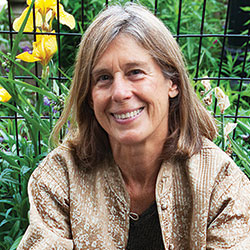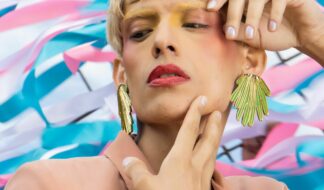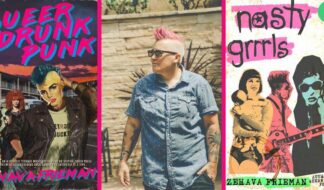By Christopher Treacy

Frida Kahlo may have been concerned with what people thought of her artwork, but she didn't much care what they thought of her.
Perhaps one reason for this is because the two things were so deeply intertwined: the Mexican native's work is – quite literally – the face she showed the world. Out of 143 formally recognized paintings, 55 of them are self portraits. Despite the dreamlike narratives they imply, Kahlo insisted they were true depictions of her reality. So, as she saw it, she shared her most personal self with the world through her work… anything else was irrelevant.
Kahlo's legacy pulses vibrantly through a new exhibit at the Detroit Institute of Arts, entitled "Diego Rivera and Frida Kahlo in Detroit," which features her work and that of Rivera, her significantly older husband and initial patron. The couple spent time together in Detroit when Rivera was commissioned by Ford Motor Company to produce the famed Detroit Industry Murals.
In conjunction with the new show, author/Kahlo biographer and art historian Hayden Herrera will talk about the artist's life and art at 7 p.m April 28 in the Detroit Film Theatre auditorium. Herrera took time out to chat with us amid an onslaught of media requests related to newly auctioned love letters that Kahlo wrote to Catalan artist Jose Bartoli in the wake of a rather steamy affair.
Kahlo was known for her affairs with both men and women. One of the more famous was with dancer Josephine Baker.
"Both of them had affairs," Herrera clarified over the phone from New York City. "Diego was jealous if they were with men, like her much discussed affair with Leon Trotsky… but he didn't seem to mind if it was with a woman."
Kahlo's tryst with Trotsky, who was also married at the time, is thought to have been a revenge tactic for a romantic entanglement that transpired between Rivera and Kahlo's younger sister, Cristina. A pointed retaliation, much of it played out in the Kahlo/Rivera Mexican compound, where Trotsky and his wife stayed while in exile. Eventually Trotsky's wife and Rivera realized what was going on and an alternate living scenario was devised.
In fact, to look over a timeline of Kahlo's marriage to Rivera, which resulted in divorce and eventual remarriage, one or both of them was almost always seeing someone else on the side. Despite this, Herrera says the marriage was strong.
"I think they loved each other very much and shared a deep, intense bond," she said. "I think they became quite dependent on one another. She loved some of the feminine parts of him, he loved the masculine parts of her… and they shared their leftist/Marxist political ideals."
Herrera went on to explain that Kahlo reportedly enjoyed Rivera's ample bosom, given his chubby build, and he in turn had a fondness for Kahlo's sprouts of facial and body hair. Together they portray an unapologetic androgyny that speaks volumes to the current hot topic of gender queering in our culture. But it's not something that Herrera discusses all that much in her book, "Frida: A Biography of Frida Kahlo," first published in 1983.
"In terms of the culture at that time, Mexico was very much a Catholic country," she said. "For my book, I was doing interviews in the mid-to-late '70s, and people were still very discreet and didn't really want to talk about that. But Kahlo lived in a highly sophisticated milieu of writers, artists and musicians, all of whom were very free about sexual behavior… affairs were common, and yet still, there's a lot we don't know."
One theory about Kahlo's affairs with women relates to her increasing fragility. Having suffered a very serious set of injuries in a 1925 bus accident – something that required 35 surgeries to correct and permanently impaired her ability to carry a child – Kahlo's adult physicality was weaker than average. It's thought that perhaps the more strenuous lovemaking with men became less attractive to her as she got older and she sought a gentler, more feminine touch.
Whatever the case, she made no apologies or excuses for her sexual choices. On the contrary, she and Rivera seemed to have fun with mixing genders, body parts and even species in a series of exquisite corpse-style drawings included in the new exhibit. Seen in that light, it's clear that they had a much deeper understanding of each other than what's implied when a more successful artist goes about bankrolling a struggling one.
"Looking back at the self-portraits, there's something about the carnality of them… a sense of desire and an energy that makes me wonder if it might be aimed a little toward women," Herrera said. "It's a feeling – totally subjective – that her intense expression seems motivated by desire. It's such a penetrating gaze, she bores right into you. She hits right inside the body for men and women both."
Diego Rivera and Frida Kahlo in Detroit
with art historian Hayden Herrera
7 p.m. April 28
Detroit Institute of Arts
5200 Woodward Avenue, Detroit
dia.org










